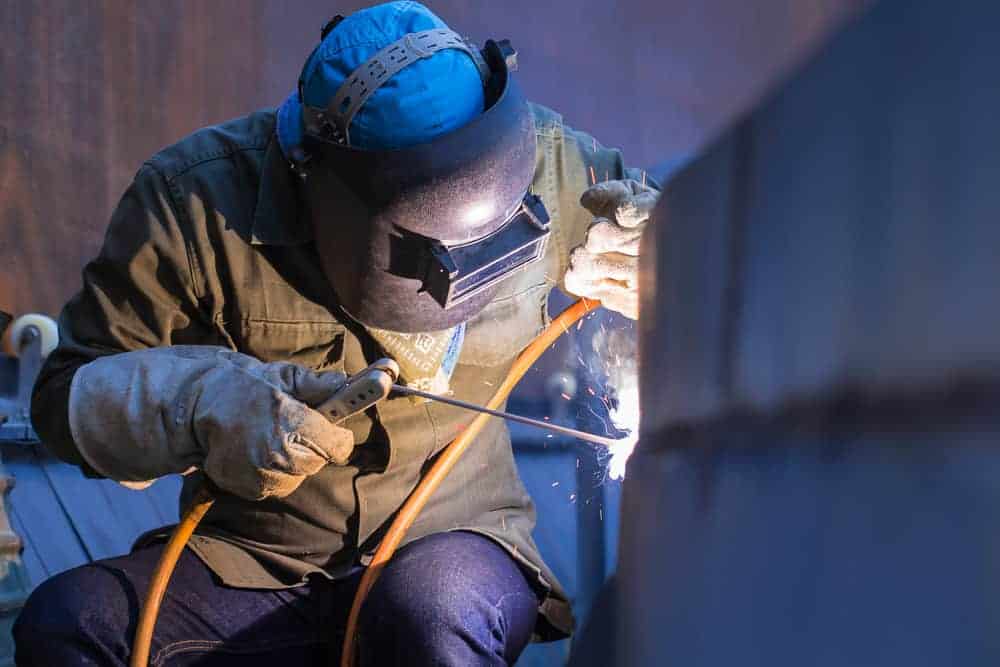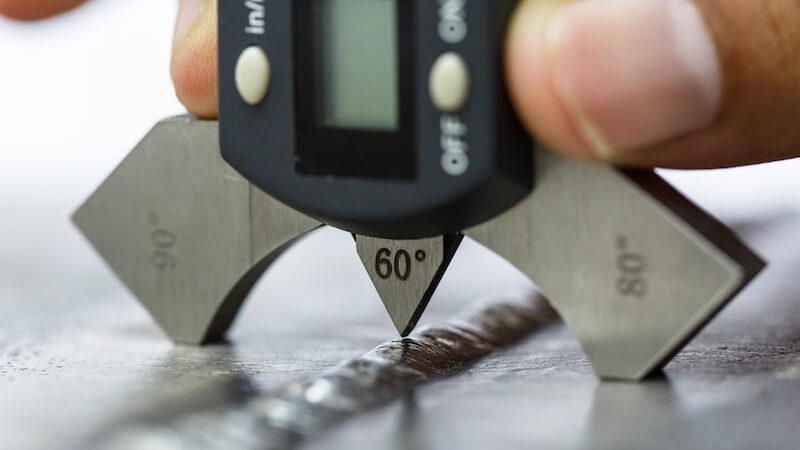Certified Houston Welding Inspection Professionals for High-Quality Assessments
Certified Houston Welding Inspection Professionals for High-Quality Assessments
Blog Article
The Necessary Duty of Welding Inspection: Understanding the Treatments, Equipment, and Specification That Govern Top Quality Analysis in Welding Workflow
Welding assessment is a vital component of quality control in welding operations, making sure the architectural stability and safety of welded settings up. By using an array of treatments, from pre-weld assessments to innovative non-destructive screening strategies, assessors systematically review weld quality against rigid industry requirements. The devices made use of in these processes is vital for identifying prospective flaws that could endanger efficiency. Recognizing the interaction in between inspection methods and regulatory conformity elevates essential questions regarding the challenges faced in maintaining these vital procedures. What effects do these elements carry the overall efficiency of welding procedures?
Significance of Welding Evaluation
Welding evaluation is critical in guaranteeing the honesty and security of welded structures, as it frequently works as the final checkpoint prior to components are put into service. The importance of this assessment hinges on its capability to recognize prospective defects that may compromise the performance and long life of bonded joints. Given the high risks included, specifically in industries such as construction, aerospace, and vehicle, comprehensive evaluation procedures are vital.
Welding defects can emerge from various variables, including incorrect strategies, poor equipment, or unsuitable products. Failing to identify these problems can result in disastrous effects, including structural failings, which might result in injury, death, and significant monetary liabilities. Welding examination supplies a methodical technique to review the high quality of welds, making certain compliance with industry requirements and regulative needs.
Additionally, reliable welding inspection adds to boosting total efficiency by decreasing rework and making certain that jobs remain on timetable. By promoting a culture of quality control, companies can also increase their credibility and client depend on. Basically, the relevance of welding examination can not be overemphasized, as it plays a crucial role in protecting both human lives and financial investments in infrastructure.
Trick Inspection Procedures
An extensive strategy to examination procedures is crucial for making sure the high quality and integrity of bonded joints. Effective examination begins with pre-weld assessments, which include evaluating welding specs, product buildings, and joint layouts to determine possible obstacles. This preparation phase establishes a baseline for high quality assumptions.
Throughout the welding process, in-process examinations are important. Examiners keep an eye on parameters such as warmth input, travel rate, and electrode angle to guarantee conformity with established criteria. Aesthetic inspections are the first line of defense, enabling the recognition of surface area defects, such as cracks, porosity, or insufficient fusion.
Post-weld evaluations include advanced strategies to assess the integrity of the joint. This might consist of non-destructive testing (NDT) methods such as ultrasonic testing, radiographic screening, or magnetic particle screening. These techniques provide deeper understandings into the interior framework of the weld, disclosing prospective problems that might not show up on the surface area.
Documents plays an indispensable duty throughout the examination process. Comprehensive records of assessments, including searchings for and restorative actions, make sure traceability and accountability, inevitably adding to continual enhancement in welding methods and total quality assurance.
Crucial Devices for Assessment
Reliable inspection relies on making use of specialized tools made to review the high quality and honesty of bonded joints. Trick tools in this process include aesthetic assessment tools, such as magnifying borescopes and glasses, which allow examiners to determine surface problems and irregularities. Furthermore, ultrasonic screening (UT) devices plays an important role by utilizing high-frequency sound waves to identify inner imperfections within welds, making certain that concealed weaknesses are recognized prior to they lead to failure.
Radiographic testing (RT) is an additional crucial approach, making use of X-rays or gamma rays to generate photos of the welds, disclosing interior problems that might not be noticeable with various other evaluation methods - Houston Welding Inspection. Magnetic particle screening (MT) is employed for ferromagnetic materials, enabling inspectors to find surface area and near-surface defects by applying great bits and magnetic areas
Dye penetrant testing (PT) is likewise substantial, including the application of a fluorescent dye to disclose surface area cracks and discontinuities. Each of these tools and methods adds to an extensive assessment method, guaranteeing that welded structures fulfill the essential high quality requirements and continue to be safe for use in site web their respective applications.

Sector Specifications and Regulations
Quality control in welding examination is significantly influenced by sector criteria and laws that control techniques and make certain security. These requirements function as standards for high quality, describing the required protocols for documentation, testing, and assessment. Key companies such as the American Welding Society (AWS), the American Society of Mechanical Designers (ASME), and the International Organization for Standardization (ISO) establish guidelines that welding professionals need to stick to throughout the examination procedure.
Conformity with these standards is not just a matter of regulatory commitment yet also a crucial part of risk monitoring in welding procedures. They encompass numerous elements, including product option, welding strategies, and certifications of workers. For instance, AWS D1.1 outlines structural welding requirements, while ISO 3834 defines high quality demands for welding procedures.
Moreover, industry laws dictate the essential qualifications for welding inspectors, necessitating accreditations that attest their know-how. This alignment with standards makes certain that evaluations are executed continually and precisely, eventually safeguarding the click for more info honesty of bonded structures. Abiding by these market requirements and laws is vital in advertising operational efficiency and keeping public count on welding methods.
Challenges in Welding Assessment


Welding assessment faces numerous difficulties that can influence the integrity and safety and security of bonded frameworks. One significant obstacle is the intricacy of the welding refines themselves, which can vary significantly depending on materials, joint configurations, and environmental problems. This variability requires a thorough understanding of varied examination techniques and their suitable applications.
Another challenge depends on the developing nature of welding innovation. As new materials and techniques are presented, examiners should constantly upgrade their expertise and skills to successfully review the top quality of welds. In addition, the physical accessibility of weld areas can prevent examination initiatives, particularly in constrained or high-risk settings.
In addition, human factors play a critical function in welding examination. Houston Welding Inspection. The subjective nature of visual inspections can result in incongruities, as various examiners might analyze the same weld in different ways. This underscores the importance of standard training and certification for inspectors to ensure a consistent strategy to high quality analysis
Lastly, the assimilation of sophisticated innovations, such as automated evaluations and expert system, offers both opportunities and difficulties. While these technologies can boost precision and effectiveness, they likewise call for considerable investment and knowledge look at more info to implement efficiently. Attending to these obstacles is vital for maintaining the integrity of welded frameworks.
Verdict
Welding assessment is important for guaranteeing the safety and stability of bonded frameworks. With extensive evaluation procedures, the usage of specialized devices, and adherence to recognized market requirements, the top quality of welding operations can be methodically assessed. Challenges persist in the inspection procedure, yet the execution of reliable techniques can minimize threats associated with structural failings. Eventually, a durable welding assessment framework not just assures conformity with laws but also improves total operational effectiveness and dependability.
Welding inspection is an indispensable part of top quality assurance in welding procedures, ensuring the architectural integrity and safety of bonded settings up.Welding examination is crucial in guaranteeing the stability and safety of welded frameworks, as it regularly offers as the final checkpoint before elements are put into service. Welding examination offers an organized strategy to review the top quality of welds, making certain compliance with market standards and governing demands.
Quality assurance in welding inspection is significantly influenced by sector criteria and regulations that govern techniques and make certain security. Secret organizations such as the American Welding Culture (AWS), the American Society of Mechanical Engineers (ASME), and the International Company for Standardization (ISO) establish guidelines that welding specialists need to adhere to throughout the examination procedure.
Report this page